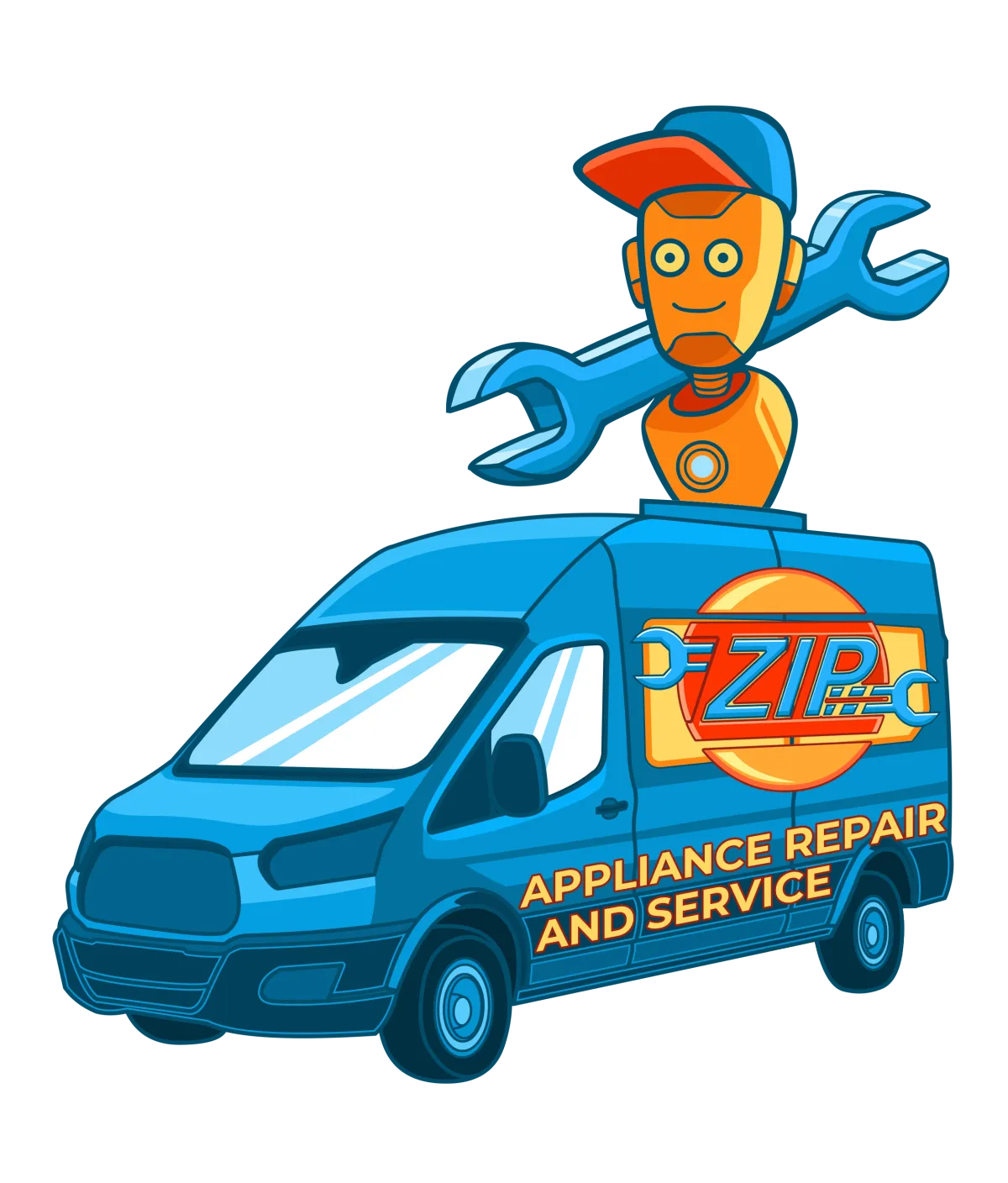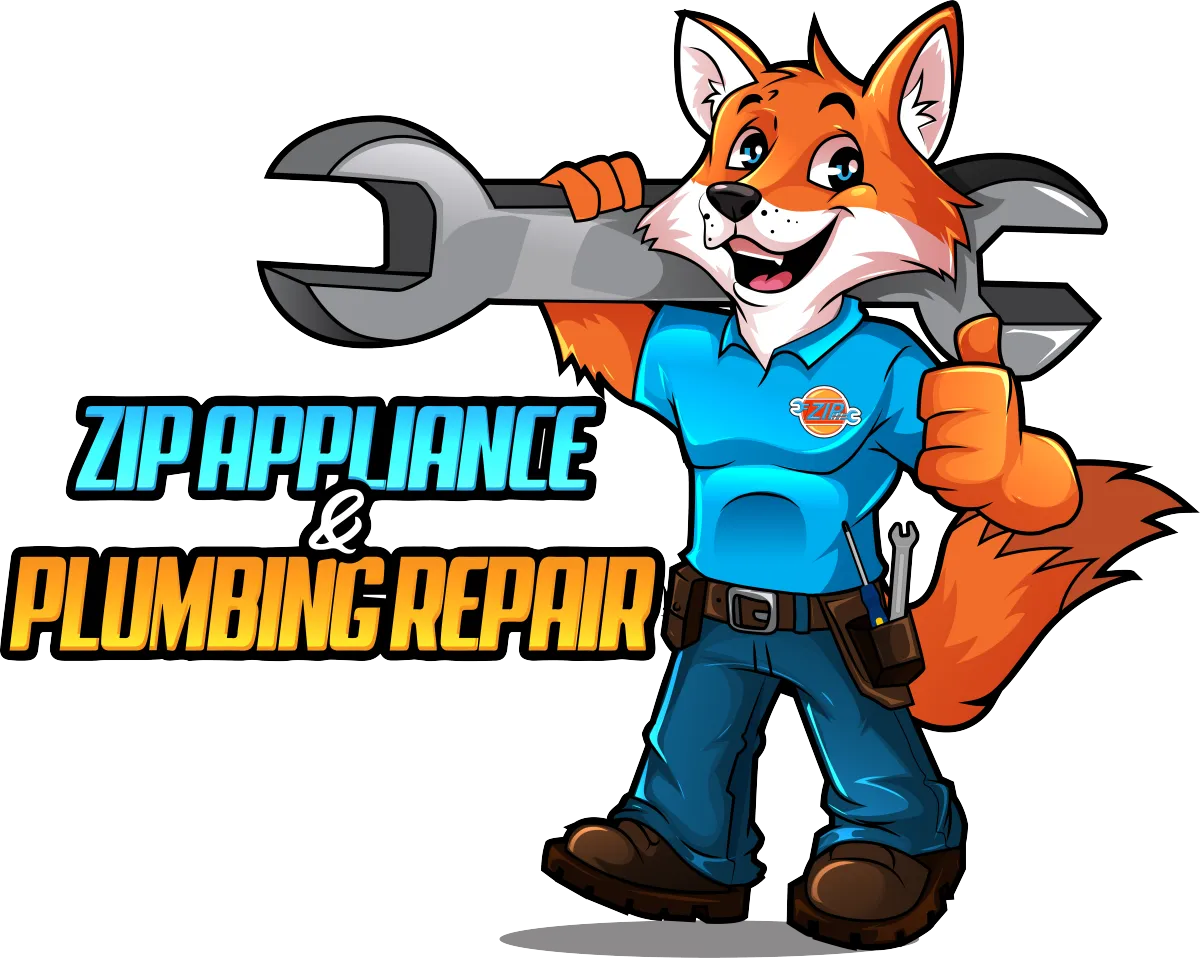Phone: (559) 272-4265
Appliance Repair Tips For Bakersfield, CA Residents

Simple Solutions for Stove Burners Not Heating
Unlock the secrets to a fully functional kitchen with our simple solutions for stove burners not heating. Get your burners back to their best with easy and effective fixes. - Appliance Boss
A stove is a fundamental appliance in any kitchen, integral to daily cooking and meal preparation. When stove burners fail to heat properly, it disrupts not only your cooking routine but also your kitchen efficiency. Functional burners ensure that you can cook meals evenly and safely, allowing for a smooth culinary experience. Understanding how crucial these components are can help you address issues promptly and avoid more significant problems.
Why Stove Burners Not Heating Is a Problem
When stove burners do not heat, it can lead to a series of inconveniences and issues. Meals take longer to cook, and certain cooking techniques become impractical. More critically, persistent problems can indicate underlying issues with the stove’s electrical system or components, potentially leading to safety hazards. Addressing these problems quickly is essential to maintain a functional and safe cooking environment.

Initial Troubleshooting
Checking Power Supply Issues
Before diving into more complex solutions, ensure that your stove is receiving power. Verify that the stove is properly plugged into an operational outlet. If you are using an electric stove, inspect the circuit breaker to ensure it hasn't tripped. A simple power issue can often be the root cause of non-heating burners.
Ensuring Proper Burner Connection
For both electric and gas stoves, check that the burners are securely connected. Electric burners should be firmly seated in their sockets, while gas burners must be correctly aligned to ensure proper gas flow. Loose or improperly seated burners can cause heating issues.
Inspecting the Stove’s Circuit Breaker
A tripped circuit breaker can disrupt power to your stove, causing burners to malfunction. Locate your home’s electrical panel and check if the breaker associated with your stove is in the "off" position. Reset the breaker if necessary, and test the stove again.
Common Causes of Stove Burners Not Heating
Faulty Heating Elements
In electric stoves, heating elements are responsible for generating heat. Over time, these elements can become faulty or burn out, leading to burners that do not heat properly. Inspecting the heating elements for visible signs of damage or wear is a crucial step in troubleshooting.
Issues with Burner Coils or Elements
For stoves with coil burners, issues can arise with the coils themselves. Burned-out coils, or those with loose connections, can prevent proper heating. Identifying and replacing defective coils is necessary for restoring normal burner function.
Problems with the Igniter or Spark Module
Gas stoves rely on an igniter or spark module to light the burners. If the igniter fails, the burners will not light. Listen for clicking sounds when you turn on the burner, and check if the spark module is functioning correctly.
Malfunctioning Control Switches
Control switches regulate burner heat levels. If these switches are defective, they may prevent burners from reaching the desired temperature. Testing and replacing malfunctioning switches can resolve heating issues.
Defective Temperature Sensors
Temperature sensors monitor and regulate the burner’s heat output. Faulty sensors can lead to inconsistent or insufficient heating. Checking and replacing defective sensors ensures accurate temperature control.
Step-by-Step Solutions
Testing and Replacing Faulty Heating Elements
To test heating elements, use a multimeter to check for continuity. If the element is faulty, replace it with a new one. Ensure that the new element is compatible with your stove model for optimal performance.
Inspecting and Repairing Burner Coils
Remove the burner coils and inspect them for damage or wear. Replace any defective coils with new ones. Ensure that the connections are secure and free from corrosion to restore proper heating.
Cleaning and Checking the Igniter
For gas stoves, clean the igniter and ensure it is free of debris. If the igniter does not spark or click, it may need replacement. Consult your stove’s manual for specific instructions on igniter maintenance.
Replacing Malfunctioning Control Switches
Turn off the stove’s power before replacing control switches. Remove the faulty switch and install a new one, ensuring all connections are secure. Test the burners to confirm proper operation.
Fixing or Replacing Temperature Sensors
Check the temperature sensor’s continuity with a multimeter. Replace any defective sensors with new ones that match your stove’s specifications. Proper installation of the sensor is crucial for accurate temperature regulation.
Detailed Troubleshooting
Testing Electrical Connections and Wires
Inspect all electrical connections and wires connected to the stove’s burners. Look for signs of damage, such as fraying or discoloration. Repair or replace damaged wires to ensure a stable power supply.
Identifying and Fixing Loose or Broken Wires
Loose or broken wires can disrupt the electrical flow to the burners. Secure loose wires and replace any broken ones. Proper wire connections are essential for consistent burner operation.
Checking the Stove’s Power Source
Verify that the power source to your stove is stable and providing the correct voltage. Fluctuations or insufficient voltage can affect burner performance. Use a voltage tester to ensure proper electrical supply.
Ensuring Proper Voltage Supply
Stoves require a specific voltage to operate correctly. Check that the voltage supply matches your stove’s requirements. Incorrect voltage can lead to burner heating issues or damage to the appliance.
Maintenance Tips
Regular Cleaning of Burner Components
Regularly clean burner components to prevent buildup of grease and debris, which can affect heating efficiency. Use appropriate cleaning solutions and tools to maintain optimal performance.
Routine Checks for Electrical Connections
Periodically inspect electrical connections and wires for signs of wear or damage. Ensuring that connections are secure can help prevent future heating problems.
Preventive Maintenance to Avoid Future Issues
Implement a maintenance schedule to address potential issues before they become major problems. Regularly clean and inspect your stove to ensure reliable operation and extend its lifespan.
When to Seek Professional Help
Identifying Complex Problems Requiring Expert Assistance
Some stove issues may be too complex for DIY repairs. If troubleshooting and basic fixes do not resolve the problem, it may be time to seek professional help. Complex electrical or gas issues require expert attention to ensure safety and proper repair.
Understanding When DIY Solutions Are Inadequate
Recognize when a problem exceeds your expertise or tools. DIY solutions are limited in scope, and certain repairs require specialized knowledge or equipment. Professional technicians can diagnose and fix issues more effectively.
Choosing the Right Professional for Stove Repairs
When selecting a repair professional, choose a licensed and experienced technician. Look for positive reviews and ensure the technician is familiar with your stove’s make and model. This ensures quality and reliable repair services.
Cost Considerations
Estimated Costs for DIY Repairs
DIY repairs can be cost-effective, but the cost of parts and tools should be considered. Calculate the total expenses for materials and any potential additional costs before starting a repair.
Costs Associated with Professional Repair Services
Professional repair services come with labor and parts costs. Obtain quotes from multiple technicians and compare them to find the best value for your repair needs.
Understanding Parts and Labor Costs
Break down the costs of parts and labor to understand what you are paying for. Knowing the typical expenses for different repairs helps in budgeting and making informed decisions.
Safety Precautions
Safety Measures During Stove Repairs
Always prioritize safety when performing stove repairs. Disconnect the power supply, use insulated tools, and wear protective gear to prevent accidents and injuries.
Handling Electrical Components Safely
When dealing with electrical components, ensure the power is off and use proper tools to avoid electrical shock. Follow safety guidelines to protect yourself and your appliance.
Avoiding Common DIY Mistakes
Be aware of common DIY mistakes, such as improper installation or overlooking safety protocols. Take time to read instructions and follow best practices to ensure a successful repair.
Conclusion
Addressing stove burners that do not heat involves a series of troubleshooting steps and repairs. From checking power sources to replacing faulty components, these solutions can restore your stove’s functionality. Regular maintenance is crucial for keeping your stove in good working condition, helping to prevent future issues and ensuring reliable performance.
For professional assistance with stove repairs or other appliance needs, contact Zip Appliance and Plumbing Repair. Our team of experts is ready to help with your stove, water heater, leaking pipes, and more. Visit www.ziprepairservice.com or call us at (661) 387-2282 for reliable and prompt service.

Simple Solutions for Stove Burners Not Heating
Unlock the secrets to a fully functional kitchen with our simple solutions for stove burners not heating. Get your burners back to their best with easy and effective fixes. - Appliance Boss
A stove is a fundamental appliance in any kitchen, integral to daily cooking and meal preparation. When stove burners fail to heat properly, it disrupts not only your cooking routine but also your kitchen efficiency. Functional burners ensure that you can cook meals evenly and safely, allowing for a smooth culinary experience. Understanding how crucial these components are can help you address issues promptly and avoid more significant problems.
Why Stove Burners Not Heating Is a Problem
When stove burners do not heat, it can lead to a series of inconveniences and issues. Meals take longer to cook, and certain cooking techniques become impractical. More critically, persistent problems can indicate underlying issues with the stove’s electrical system or components, potentially leading to safety hazards. Addressing these problems quickly is essential to maintain a functional and safe cooking environment.

Initial Troubleshooting
Checking Power Supply Issues
Before diving into more complex solutions, ensure that your stove is receiving power. Verify that the stove is properly plugged into an operational outlet. If you are using an electric stove, inspect the circuit breaker to ensure it hasn't tripped. A simple power issue can often be the root cause of non-heating burners.
Ensuring Proper Burner Connection
For both electric and gas stoves, check that the burners are securely connected. Electric burners should be firmly seated in their sockets, while gas burners must be correctly aligned to ensure proper gas flow. Loose or improperly seated burners can cause heating issues.
Inspecting the Stove’s Circuit Breaker
A tripped circuit breaker can disrupt power to your stove, causing burners to malfunction. Locate your home’s electrical panel and check if the breaker associated with your stove is in the "off" position. Reset the breaker if necessary, and test the stove again.
Common Causes of Stove Burners Not Heating
Faulty Heating Elements
In electric stoves, heating elements are responsible for generating heat. Over time, these elements can become faulty or burn out, leading to burners that do not heat properly. Inspecting the heating elements for visible signs of damage or wear is a crucial step in troubleshooting.
Issues with Burner Coils or Elements
For stoves with coil burners, issues can arise with the coils themselves. Burned-out coils, or those with loose connections, can prevent proper heating. Identifying and replacing defective coils is necessary for restoring normal burner function.
Problems with the Igniter or Spark Module
Gas stoves rely on an igniter or spark module to light the burners. If the igniter fails, the burners will not light. Listen for clicking sounds when you turn on the burner, and check if the spark module is functioning correctly.
Malfunctioning Control Switches
Control switches regulate burner heat levels. If these switches are defective, they may prevent burners from reaching the desired temperature. Testing and replacing malfunctioning switches can resolve heating issues.
Defective Temperature Sensors
Temperature sensors monitor and regulate the burner’s heat output. Faulty sensors can lead to inconsistent or insufficient heating. Checking and replacing defective sensors ensures accurate temperature control.
Step-by-Step Solutions
Testing and Replacing Faulty Heating Elements
To test heating elements, use a multimeter to check for continuity. If the element is faulty, replace it with a new one. Ensure that the new element is compatible with your stove model for optimal performance.
Inspecting and Repairing Burner Coils
Remove the burner coils and inspect them for damage or wear. Replace any defective coils with new ones. Ensure that the connections are secure and free from corrosion to restore proper heating.
Cleaning and Checking the Igniter
For gas stoves, clean the igniter and ensure it is free of debris. If the igniter does not spark or click, it may need replacement. Consult your stove’s manual for specific instructions on igniter maintenance.
Replacing Malfunctioning Control Switches
Turn off the stove’s power before replacing control switches. Remove the faulty switch and install a new one, ensuring all connections are secure. Test the burners to confirm proper operation.
Fixing or Replacing Temperature Sensors
Check the temperature sensor’s continuity with a multimeter. Replace any defective sensors with new ones that match your stove’s specifications. Proper installation of the sensor is crucial for accurate temperature regulation.
Detailed Troubleshooting
Testing Electrical Connections and Wires
Inspect all electrical connections and wires connected to the stove’s burners. Look for signs of damage, such as fraying or discoloration. Repair or replace damaged wires to ensure a stable power supply.
Identifying and Fixing Loose or Broken Wires
Loose or broken wires can disrupt the electrical flow to the burners. Secure loose wires and replace any broken ones. Proper wire connections are essential for consistent burner operation.
Checking the Stove’s Power Source
Verify that the power source to your stove is stable and providing the correct voltage. Fluctuations or insufficient voltage can affect burner performance. Use a voltage tester to ensure proper electrical supply.
Ensuring Proper Voltage Supply
Stoves require a specific voltage to operate correctly. Check that the voltage supply matches your stove’s requirements. Incorrect voltage can lead to burner heating issues or damage to the appliance.
Maintenance Tips
Regular Cleaning of Burner Components
Regularly clean burner components to prevent buildup of grease and debris, which can affect heating efficiency. Use appropriate cleaning solutions and tools to maintain optimal performance.
Routine Checks for Electrical Connections
Periodically inspect electrical connections and wires for signs of wear or damage. Ensuring that connections are secure can help prevent future heating problems.
Preventive Maintenance to Avoid Future Issues
Implement a maintenance schedule to address potential issues before they become major problems. Regularly clean and inspect your stove to ensure reliable operation and extend its lifespan.
When to Seek Professional Help
Identifying Complex Problems Requiring Expert Assistance
Some stove issues may be too complex for DIY repairs. If troubleshooting and basic fixes do not resolve the problem, it may be time to seek professional help. Complex electrical or gas issues require expert attention to ensure safety and proper repair.
Understanding When DIY Solutions Are Inadequate
Recognize when a problem exceeds your expertise or tools. DIY solutions are limited in scope, and certain repairs require specialized knowledge or equipment. Professional technicians can diagnose and fix issues more effectively.
Choosing the Right Professional for Stove Repairs
When selecting a repair professional, choose a licensed and experienced technician. Look for positive reviews and ensure the technician is familiar with your stove’s make and model. This ensures quality and reliable repair services.
Cost Considerations
Estimated Costs for DIY Repairs
DIY repairs can be cost-effective, but the cost of parts and tools should be considered. Calculate the total expenses for materials and any potential additional costs before starting a repair.
Costs Associated with Professional Repair Services
Professional repair services come with labor and parts costs. Obtain quotes from multiple technicians and compare them to find the best value for your repair needs.
Understanding Parts and Labor Costs
Break down the costs of parts and labor to understand what you are paying for. Knowing the typical expenses for different repairs helps in budgeting and making informed decisions.
Safety Precautions
Safety Measures During Stove Repairs
Always prioritize safety when performing stove repairs. Disconnect the power supply, use insulated tools, and wear protective gear to prevent accidents and injuries.
Handling Electrical Components Safely
When dealing with electrical components, ensure the power is off and use proper tools to avoid electrical shock. Follow safety guidelines to protect yourself and your appliance.
Avoiding Common DIY Mistakes
Be aware of common DIY mistakes, such as improper installation or overlooking safety protocols. Take time to read instructions and follow best practices to ensure a successful repair.
Conclusion
Addressing stove burners that do not heat involves a series of troubleshooting steps and repairs. From checking power sources to replacing faulty components, these solutions can restore your stove’s functionality. Regular maintenance is crucial for keeping your stove in good working condition, helping to prevent future issues and ensuring reliable performance.
For professional assistance with stove repairs or other appliance needs, contact Zip Appliance and Plumbing Repair. Our team of experts is ready to help with your stove, water heater, leaking pipes, and more. Visit www.ziprepairservice.com or call us at (661) 387-2282 for reliable and prompt service.
If your dryer has been giving you problems, contact Zip Appliance Repair & Service at (661) 387-2282

Appliance Repair In A Zip
If you need a dryer repair call our Team at (661) 387-2282, or visit our online scheduling page to request service.
Appliance Repair
Plumbing Repair Services
HAVE A QUESTION, CALL (661) 387-2282

Online Offers
Take advantage of our online discount offers - save time and money...

Residential & Commercial appliances
See what our company can do for you

Appliance Repair Tips
If your appliance is not working properly...

1405 Commercial Way ste 100
Bakersfield, CA 93309
Lic # 1116346
Equipment We Sevice
- A Call To Confirm Your Appointment Time
- A Email Detailing Your Assigned Technician
- Information Needed Before The Repair Can Be Started
- An Estimate Of Work To Be Done
© 2025 ZIP APPLIANCE REPAIR & SERVICE LLC








